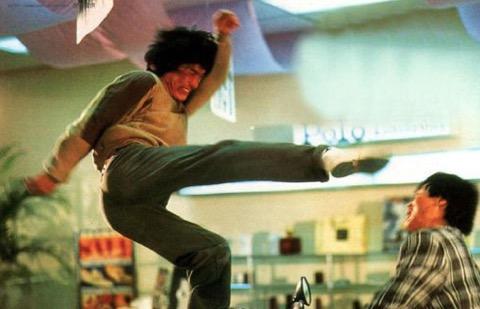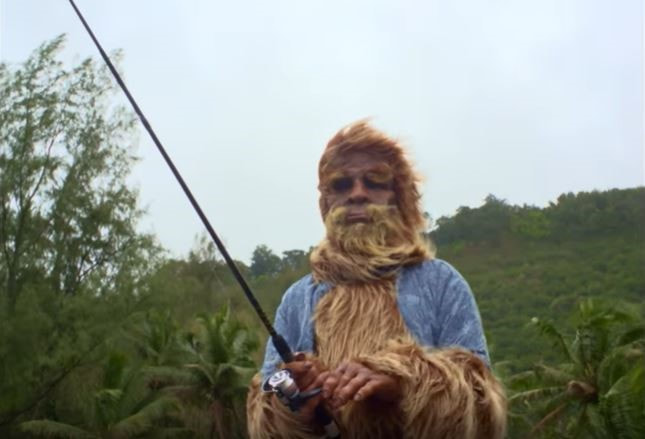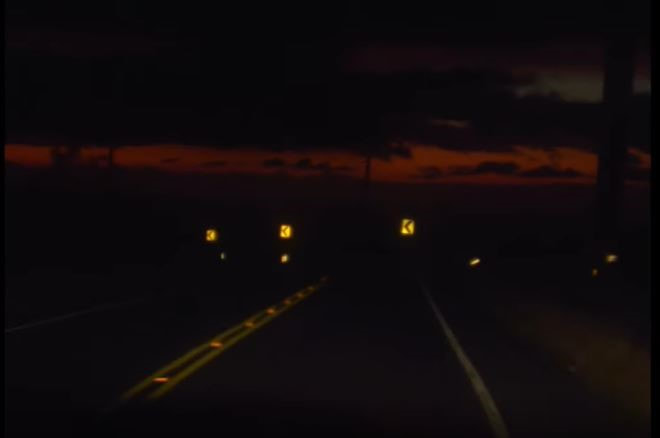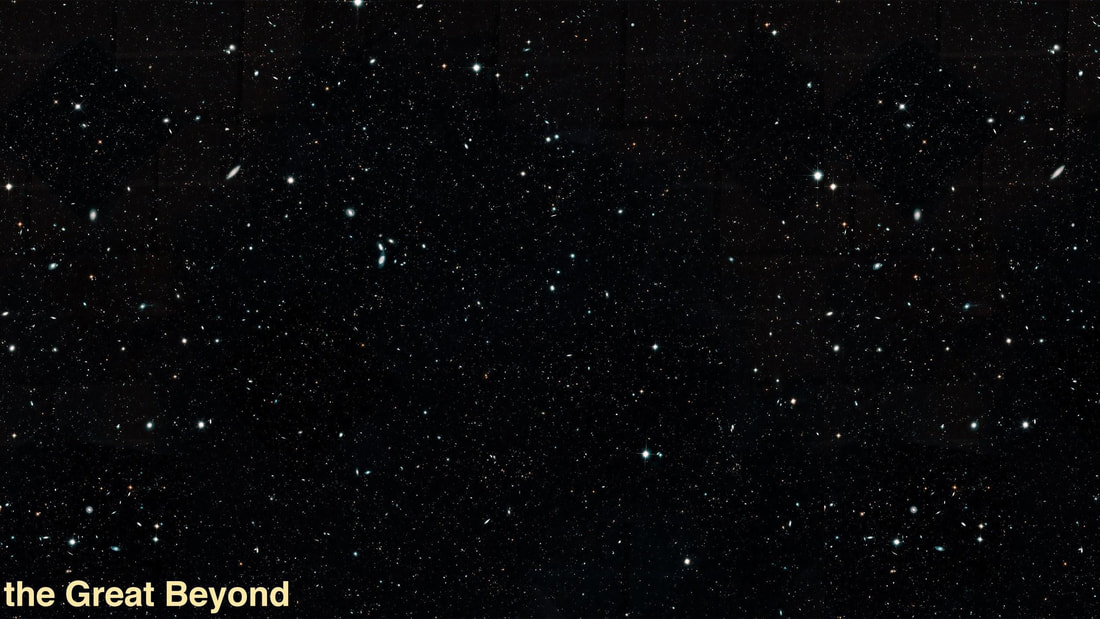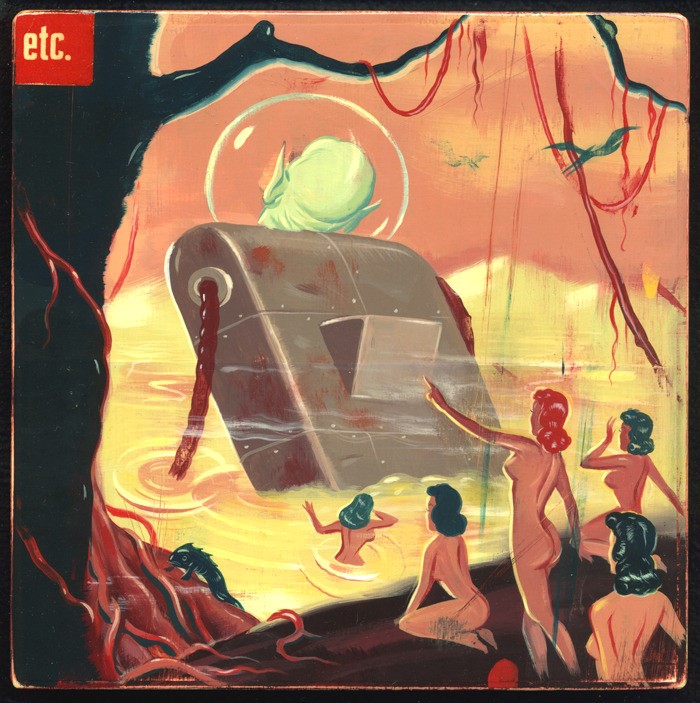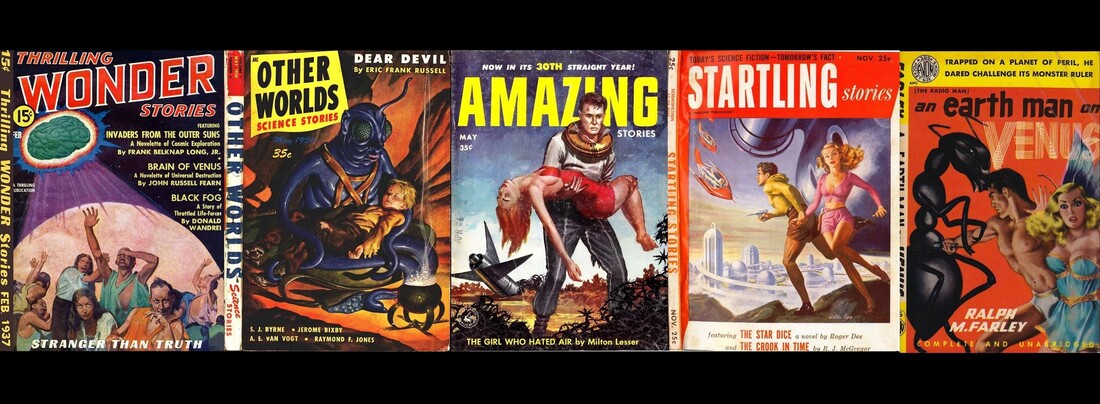|
by Katherine Schloss The other day, I was walking down the lovely street of Dwight Way when something shiny caught my eye. A plaque on the ground marked the usually insignificant stoplight where you can catch the 79 (which I find to be much sexier than the trusty old steed that is the predictable 51B) just before Theta Chi. Called “Hell’s Fissure,” the plaque demarcates the mythical location where, apparently, a chasm opened up during the 1906 earthquake and “creatures of unspeakable horror” terrorized the local neighborhood. I started to think of all the crazy characters that I encounter without a second thought on the daily here in Bezerkeley. I started to really believe in the chasm’s lasting power over the area as a result of its introduction of such colorful characters as the Hell Yeah Guy, Furryboi, the lady at Brown’s whose “Next!” hits you like a freight train…
In related news, recent reports have deemed six buildings on the UC Berkeley campus seismically unsafe. When the beloved Hayward faultline opens up at a football game this year - “We could have been good!” we’ll say, “But the earthquake ruined all of that…” - buildings as old as shit will crumble. I interviewed a few passing people about this dilemma. First, I hit up a Fiji frat dude, just as he was coming dramatically down his mansion’s luxurious staircase as if he were Scarlett O’Hara of the movie Gone with the Wind. “Bro, I haven’t been to class in a week! I gave myself a long weekend and went on a three-day bender. We can’t rent out RVs anymore because of the incident last year, so I’m thinking of hang-gliding to the next USC game. Oh, it’s actually here? Sick… we’ll see if I’m coherent enough to make it. Oh, wait - what were we talking about??” Then, outside of Moe’s, we find a resident soft boi looking at the $2 bookrack. His instagram bio says, “Brain like Berkeley,” and he cries into his beanie when no one’s looking about the girl that wasn’t receptive to his charms. “The way she says hi is cathartic, like the dew on the soft grass.” I decide he’s a lost cause. When asked for a statement, our lovely chancellor was tempted to not comment. Then, when walking down Sproul one day, dodging flyers and faceless/nameless consultors, I ran directly into Oski himself. I felt him slip something into my pocket, and then it was like he’d never been there. The note said: “When the time comes, hide in the tunnels. You’ll know what to do.” As the world around me started to burn to the ground, and memories of a recent earthquake came to mind, I started to feel like that meme about the dog in the burning room.
0 Comments
by Ryan Simpkins Last night, I decided to drink and watch Police Story with my friends (Criterion Collection just had a sale). The moon was high and vibes were chaotic as we rushed into Safeway at 10:30 PM on a Monday night looking for chips and beer. First person I see is a guy who I only kind-of know, just a bit. People make me feel flustered, especially guys who I only kind-of know and tried to flirt with one time three years ago at a bad party, so I decided to get away from that potential social interaction. I dove into the chip aisle, only to see a guy I was friends with the weekend of my freshman orientation where we only bonded over smoking weed and how I was completely terrified of college. He has become one of those “going to pretend I’ve never met you before” people I see on campus and avoid for my social anxiety’s sake. And here he was. Blocking me from hiding from the other social interaction I was avoiding. In the chip aisle.
I decided to go back and talk to Jack. It went fine, convo was pleasant, and I told him about our plans to drink and watch Police Story (cause Criterion Collection just had a sale). So then Jack goes, “why is that Criterion?” And, honestly, valid question. For those of you who don’t know, Police Story is a 1985 cop-action-comedy starring, stunt choreographed, written, and directed by Jackie Chan himself. My boyfriend thinks he’s cute, my favorite director loves his work, apparently he’s politically weird but idk, I just know his animated TV show and now, I guess, Police Story. I’m not going to try to explain the plot to you, because honestly, I do not remember. Chan is a cop, he’s bodyguarding some lady, and the lady is also working for the bad guys. Something to do with a court case. Anyways. There are multiple reasons why this crazy fucking movie belongs on oh-so-sacred-and-special and film-twitter-deemed-holy Criterion Collection. To start, the film was fully conceived by one of the greatest stuntmen to have ever lived, and so the simple form of filming is brand new. His action sequences are genuinely incredible, mostly existing in few long shots with intense zooms to accentuate context, intensity, or perspective. A close-up on Chan will zoom out to reveal an entire city block of fighting men. A landscape of a bus speeding by shoots in on a minuscule Chan climbing the landscape, the now extreme close up revealing that he just missed the bus he’s been chasing down. It’s like he understood the theory that long shots are the only true artistic film form and combined it with snapchat technology. The feats themselves are so undeniably unbelievable that we would jump from our seats and yell, my boyfriend’s housemate coming down multiple times to ask us to quiet down. At one point, Chan jumps down multiple stories by sliding down a string of fairy lights, electricity exploding around him as the bulbs burst. I think he wanted to show, with his long shots and extreme zooms, that these stunts were truly practically and really him, giving credit to the stuntmen who perform them. These stunts are fun to watch not only due to the unfathomable acts performed, but because Chan really does have an aesthetic sense of style. Every set piece and character is color blocked in primaries, one chase scene consisting of one all green, one all yellow, and one all red car. A village literally collapses as Chan and the goons plow through it in their cars, bright blue buildings and huge red awnings falling into a colorful rubble. The characters themselves are bright and stylish, wearing pale yellow turtlenecks or all cyan jumpsuits with a flaming orange scarf. Police Story is a fun film to watch, your eyes entertained endlessly. That being said, there are also plenty of valid reasons to question why it was given the Criterion esteem. Chan excels in style and action, but any moment where the film tries to be anything other than action (Chan, too, trying to shake off his action star role in moments for intense drama or comedy shtick) falls awkwardly and confusingly flat. For example, there’s a scene where Chan wears a very noticeable outfit, followed by a scene where someone else is wearing the exact same outfit. But no one says anything? There are many moments where a character will cross a line with a woman (saying something offensive, physically attacking her, sexual harassment/assault, etc), and the women or characters around her will not acknowledge. There’s a scene where Chan forgets that it’s his birthday, comes home to a surprise party (where every single guest is a woman), and has cake thrown in his face by offended women multiple times. Like, three times. It’s not an action scene. Why does he have so many cakes? There’s a scene halfway through the movie where Chan, for some reason, is left to watch a whole police station alone. As the scene explores, one man manning all the station’s phones is a hard job, so Chan juggles between phone calls, accidentally referring to one caller as another or hanging up when he meant to hit hold. He eventually gives up and hangs up every phone, only to realize the confusion has left him in a web of phone lines, tangled in a comedic mess. It’s impressive that he envisioned such choreography, and the physical comedy is pretty funny. But the calls Chan ignores are literally women being raped or beaten by men. And Chan just eats his ramen. That pretty much sums up the whole of Police Story. Chan performs some flashy and well-shot stunts that leave you asking how he did it, as women suffer at the expense of a joke. At least he nailed the depiction of cops abusing their power and ignoring their duties to serve themselves. Maybe that’s why they put it on Criterion. by Lucas Fink Sincerity scares me. When the music cuts out in a movie, and I’m to observe the quietly sobbing face of the protagonist, marred by countless rivulets of tears, I get antsy. I get uncomfortable. When the music comes in, and the camera zooms out on the protagonist and their love interest embracing, as the screen fades to black, I get antsy. I get uncomfortable. But when the protagonist cracks a little “wink-to-the-audience” joke to undercut the emotional potency of scene, I feel relieved. Why is that? Metamodernism is a really cool word that refers to the convergence of a modernist sincerity and a postmodernist cynicism in movies, television shows, books, and video games today. The term metamodernism was first used by Mas'ud Zavarzadeh in the 1970s and was substantiated further by Robin van den Akker and Timotheus Vermeulen in their 2010 essay on the subject. The crux of their argument is essentially that the modulation between elements of modernism and postmodernism in contemporary art is suggestive of a departure from postmodernism, and as a result, we need a new term to more aptly describe the current cultural scene. Let’s take, for example, the first Bryan Singer X-Men and the first Sam Raimi Spider-Man films, both of which are unapologetically sentimental and at no point engage in some meta-commentary on such sentimentality. Then we have the Marvel Cinematic Universe of the late 2000s and 2010s, which is, to an extent, predicated on rejecting and undercutting that overt sincerity with Robert Downey Jr.’s signature sarcasm. And, finally, we now have films like Star Wars: The Force Awakens and The Last Jedi, which rediscover an infectious earnestness while retaining that postmodern maturity of their Marvel predecessors. This return to sincerity, mostly unadulterated by a tongue-in-cheek attitude, has not gone unchallenged; a vocal minority of angry man-children on 4Chan have made it their mission to deride every aspect of the new Star Wars films as a response to this tonal shift in their treasured franchise. Many of my peers share sentiments unsettlingly similar to those of the internet trolls, which to me indicates that sincerity is, in the current zeitgeist, no longer the default mode of communication. I notice this phenomenon in myself: in many discussions with friends, the literal meaning of what I say is the exact opposite of the actual meaning; I often use sarcastic inflections to vocalize thoughts or suggestions that I want to preemptively ensure won’t be taken seriously regardless of if I want them to be taken seriously. Sincerity scares me. I want to change that. Postmodernism, I must be careful to point out, is in no way an innately bad thing; it, as a broad philosophical and cultural movement, does not endorse the substitution of Toby Maguire’s Spidey-Sentimentality with Ryan Reynold’s deadpan delivery of fourth wall-breaking witticisms. But the more we see this shift in our art, the more we’ll adopt irony as a primary means of communication. Or it could be that our art is merely responding to an increase in irony in the social scene. Does life imitate art, or vice versa? I have no idea. It does appear, though, that a metamodern shift is our only hope at eradicating this aversion to earnest expressions of emotion, as it may allow us to have the best of both worlds: in metamodern art, like Rick and Morty, a relentless, vitriolic, misanthropic pessimism is balanced by disarmingly sentimental reminders of its characters’ humanity. But, again, I don’t know the solution, or even if a solution to this phenomenon is needed. What I do know, though, is that I miss when moments of collective catharsis, of emotional intimacy with others, weren’t something to be warded off by means of a snarky, self-aware remark. I long to see in the next Marvel movie a scene like Maguire’s Peter Parker suiting up for the first time: the score crescendoing euphorically as the image of Parker admiring himself in the mirror swells with unapologetic and unembarrassed pathos. I’ll end with a quote from the late David Foster Wallace, who says everything I’ve been trying to articulate in the last 690 words or so in just two sentences: “Irony’s gone from liberating to enslaving. There’s some great essay somewhere that has a line about irony being the song of the prisoner who’s come to love his cage.” by Melody Niv Jakob Ogawa’s latest song, April, brings to light images of sleepy afternoons in late August, the cool breeze reminiscent of the slow end of summer, responsibilities lacking yet emotional angst making up for it. Ogawa is known for his enchanting musical pieces, receiving much acclaim for songs Let it Pass, characterized by its incandescent guitar riff, and synth-heavy, sweet All Your Love. This latest song lulls you into a bittersweet respite, its lyrics bringing vestiges of sweet, summer nostalgia. Although the lyrics are seemingly sweet and adoring -- I often dream of you -- it is infused with touches of melancholy, as seen by Sometimes i'm all alone Even when you hold my hand I think you understand Switching to Sometimes you’re all alone Even when I hold your hand You know I understand in a later verse. The switch in perspective demonstrates the nuance of the purported relationship -- both parties are there for each other, supporting one another, yet the narrator of the story is definitive in their partner’s ability to know how much they care, while the narrator is unsure of their partner’s ability to understand their feelings -- “I think you understand” juxtaposing against “You know I understand”. The uncertainty is heartbreaking and relatable, a shared experience most can relate to, or at least understand the tragedy of. Ogawa’s latest song carries influence from many other sources, ranging from childhood television shows to black female artists from the ‘50s. The initial beats of the song are reminiscent of Elton John’s Benny and the Jets, but with a psychedelic groove element morphed within it. The underlying beat throughout the song is also reminiscent of Alone Again by Gilbert O’Sullivan. Neo-jazz influence can be seen within the song, its emergence ubiquitous in popular music today, as seen in artists like Homeshake, Crumb, and the like. Specifically, neo-jazz influence is heard through Ogawa’s soothing voice over the hypnotizing, funk-inspired track. Neo-jazz is further propagated by the resemblance to Billie Holiday’s Crazy He Calls Me, her tonal shift when singing the words of “the way” in the first verse of “and I’ll move the mountains out of the way”, echoed by Ogawa’s shift when he sings “my hand” in the first verse. April’s enchanting chorus, da da da, simplistic yet captivating, is reminiscent of childhood chorales, carrying a simplistic, highly enjoyable and catchy melody. The entirety of the song brings nostalgia to the brink, but the chorus does so in an even more magical way, its childlike euphony mirroring the endlessly and mindlessly happy tunes of Elmo from Sesame Street and other childhood phenomena. Sweet and sentimental, Jakob Ogawa’s April is an enchanting, euphonious song that will trap your unsuspecting heart as you drift away, carried by Ogawa’s soothing voice. The lyrics don’t vary much in range, lending strength to its simple, yet emotionally-charged narrative. Mellifluous in nature, the melancholic cadence of the song will leave you wistful over experiences you may not even have had, but can still relate to nevertheless. Listen to Jakob Ogawa’s latest song April -- you’ll be left in a dream state.
by Saffron Sener What follows is an exhibit proposal. It is a curated collection of multiple pieces all relating to each other as per the below-explained theme/title. This blog post is meant to exist as an online installation accessible to all. Please consider the included pieces as if you were visiting a physical gallery. Enjoy! Exhibit Title: the Great Beyond Pieces, with their display captions: Powers of Ten (1977) by Charles and Ray Eames https://www.youtube.com/watch?v=0fKBhvDjuy0 This short film (nine minutes) was created by couple Charles and Ray Eames. It documents their perception of existence as it would appear at different levels of magnitude. Zooming in on cells and out on the universe, this work combines scientific interpretation with art in its reckoning of life at every size. Etc. by Ryan Heshka acrylic + mixed media on board, 2007 Depicting a group of women and a mechanical beast moving outward from view, this imagining of alien life is colorful, intricate, and wonderfully weird. Heshka draws on pulp fiction cover art from the early to mid-20th century and adds his own eccentric flair and narratives to create windows to other worlds. Assorted Pulp Fiction covers, unknown artists A small assemblage of an almost endless collective, these pulp fiction covers display peeks into their subjects, from space adventurers to overlords to aliens. Hailing from the 1930s, ‘40s, and ‘50s, these illustrations allow modern viewers an idea of how authors and artists viewed life in outer space and beyond, granting a portal to the science fiction of yesteryear. Christ and the Virgin Interceding for Humanity Before God the Father by Lucas Cranach the Elder oil on lime, 1516-1518 For centuries, the stars of space were not necessarily its most compelling aspect; space was also the home of God and Heaven. In this piece, Lucas Cranach the Elder asserts the dominion of God as the skies and the dominion of humanity as the Earth, laying a clear spatial divide and emphasizing the divine aspect of the atmosphere (and beyond).
A short playlist including five songs "Brave Captain" - fIREHOUSE "I Hear a New World" - Joe Meek & the Blue Men "Get Up" - The Blow "Synthesize Me" - The Space Lady "Portofino 1" - Raymond Scott Each of these songs diverge in genre and topic but remain related and valuable in their perceptible treatment of space, the future, or the Great Beyond in some way. Exhibit Description Our lives are spent wholly under a blanket of stars. We can only see them for half of this time, but they are always there. And humanity has confronted this omnipotent presence in endless ways. This exhibit will delve into perceptions of the Great Beyond, be it visions of aliens or God, tales of space-explorers or the sizes of everything. We begin with a realistic imagination of the universe. Its distance and abstractness pose no barrier for scientific exploration. Charles and Ray Eames tackled this in their short documentary film “Powers of Ten” (1977). Bringing our view of the universe out to 100 million light years and then 0.000001 angstroms in, the Eameses take their viewers into the fibers of the beyond in two directions to confront the magnitude of our existence. This film wrestles with the relativity of everything, braving potential existential consequences and qualms. The 20th century lent itself to visualizations of the future, of the far-off and magical 21st century. With attempts to pierce space (like Sputnik or the Moon landing), space became synonymous with progress; one cannot separate the Great Beyond from its connection to forward movement. It is in the world of the future where space becomes approachable. Raymond Scott, an American composer who invented and constructed his own synthesizers, drum machines, and other electronic instruments, affirmed the direction of music into the future with his experimental tracks like “Portofino 1”. The happy, yet almost pensive song is a collection of electronic sounds tied together and fit for play over a tour of the metropolises so often imagined of the future. His technological compositions paralleled images of an automated, advanced future. But, there are aspects of the cosmos and our interjection of humanity into that space which necessitates discussion. Why - why does our species look up to the skies with dreams of divinity and exploration? Is it an age-old fascination of that which is just beyond our reach or is it something more? And, in this age of planetary collapse - how ethically can we dream about outer space? Should we look to the stars for hope or should they act as reminders of our own relegation to this planet which is currently being killed? Listening to “Get Up” by The Blow exposes us to one person’s grappling with the hoarding of resources by older, richer people. Rather than enter the Great Beyond of outer space, this person sings of “the Internet ghetto” that’s “all made of light,” all that’s left for people “too late to get the 3D real estate.” For this person, it’s not the stars that provide an outlet for their future, but rather the digital lifescape. Often, outer space is referred to as the “Last Frontier.” The concept of a “frontier” is complicated and often controversial - the word itself implies untamed, ready-for-the-taking space, but often buries the reality of that which already exists. We can look to American history for proof of this; as white settlers moved further and further west, further and further into the “frontier,” they paved their way through the destruction and decimation of Native lives and natural landscapes. Though the United States prefers to remember history through the glorified lens of Manifest Destiny, this requires the denial of a very real Native American genocide. How does this translate to the Great Beyond? Well, like images of cowboys in Old Western films, there are the heroes and adventures of mid-20th century pulp fiction novel covers. White men and women are seen battling the native inhabitants of whatever far-off planet they’re exploring, conquering the land and quelling the threat. And other adventures in the “Last Frontier” assume an almost Biblical quality - all-powerful entities dictating life and special children become the center of the space story. fIREHOUSE’s “Brave Captain” tells the tale of an expedition on the brink of mutiny. Exploration gone wrong - a treatise into the inevitable dangers of journeys into the unknown. And yet, it is a lonely dimension, space. There is no sound, no warmth, no song drifting by like Joe Meek & the Blue Men’s “I Hear a New World” feels it would be. And from the human eye, there are only the stars and darkness for miles upon miles upon miles. But it is in those dark spaces that humans have found space to fill. Be it an alien world, as seen in Ryan Heshka’s Etc., or the plane of the divine, as asserted by Lucas Cranach the Elder in Christ and the Virgin Interceding for Humanity Before God the Father, we have lost no time in seeing what is beyond the capacity of our eyes. With love, though, we look up to the stars. The Great Beyond is that unreachable, untouchable, but wondrous space that allows imagination to flourish. We don’t know what’s out there, so anything could be. We attempt to chip away at it with searches for inhabitable planets and journeys to Mars, but it remains as that which is just away from our fingertips - just beyond. “Synthesize Me”, sings the Space Lady, who got her name from an underground Berkeley newspaper in the 1980s. “Hypnotize me - energize me.” by Haley Kittleson It’s official. Everyone’s lips are constantly chapped, you’re breaking out that box of cozy things you’ve been waiting to open since that unbearably hot week last month, you are spending noticeably more time in your go-to cafe, and people are saying “Can you believe it’s already October?!”. I can confirm that, yes, fall is among us. To many, this means the excitement of the holiday season is just around the corner, and to some, it begs the looming question: “The year is three-quarters over. What are you doing to make the remaining fourth worthwhile?”. Now that the semester is fully underway and people (including myself) are in more of a routine, I have had time to reflect on what these next few months might entail for me... Since transferring to Berkeley this fall semester, I have been faced with a lot of ‘new’ in terms of university life. For starters, classes typically exceed fifty people, there are way more than twenty organizations to get involved with on campus, tons of research and other internship opportunities are readily available, and so much more. It is a bit of a culture shock coming from a city college to say the least. But with that being said, amongst the stressful moments of transition, have been so many moments of gratitude. Being a November baby, I was always offended by the people who started celebrating Christmas immediately after Halloween. Because in truth, Thanksgiving is my favorite holiday (and how can you just disregard November like that?!). I always find that the most growth comes from personal reflection and understanding. Without understanding how you might have changed for the better or worse in your recent history, how do you expect to learn and grow in your foreseeable future? During the last few months of the year, and especially this year, I am looking at how my life has shifted over the course of 2019. Don’t get me wrong, 2019 has been the most hectic year I have ever experienced yet. Chock-full of euphoric moments through travel and life-long accomplishments, to horribly tragic and life altering events. Regardless of the feeling, I am a sucker for nostalgia. I love to remember the best and the worst because it helps me put things in perspective as my life progresses. So much nowadays tells us to not feel things fully, and continue soldiering on. Yes, I am one to soldier on because life never stops, but I manage to stay emotionally conscious through music. Through curating playlists associated with the noteworthy events, people, and emotions in my life, even in the most confusing of times I can find some sort of personal clarity (while also creating a grade-A playlist, if I do say so myself). Now that fall is here and my nostalgia is kicking into high-gear, I am going to recommend songs for all the feels one might be having in the remaining fourth of 2019... Feeling like strutting your spooky szn fit down the street to spice up your Tuesday morning commute to class? This French-Psychadelic-Pop-Rock band will bring a whole new level of style to your fall season. La Femme has ranked in my top three favorite artists for the past four years, and is an all year round favorite, but has a particular je ne sais quoi in the spookier months. Song: “Amour dans le motu” and “Hypsoline” Album: Psycho Tropical Berlin (Bonus Track Version) Artist: La Femme … and my personal favorite, “Jaded Future - Future Las (Bonus Track)” Album: Psycho Tropical Berlin (Bonus Track Version) Feeling like having a particularly slow morning with a piping cup of your signature hot beverage because it’s cold and overcast outside? Both of these artists have a special place in my heart for their ability to achieve such a plethora of things through their music. Connan Mockasin takes a much more experimental, yet dream-like, approach to his music -- especially in his earlier albums Forever Dolphin Love and Caramel (also worth a listen). Devendra Banhart incorporates his Venuzuelan roots with his music to make himself into a widely versatile artist in early 2000’s freak folk movement. Song: “Charlotte’s Thong” Album: Jassbusters Artist: Connan Mockasin. Song: “An Island” Album: Nino Rojo Artist: Devendra Banhart. Feeling like getting lost in your thoughts as you stroll along the water at the Berkeley Marina (or your naturey-area of choice)? Both of these songs have helped me find intention in my actions in separate periods where I couldn’t seem to find the motivation I needed to persevere. Often times as fall begins, so does the long season of cold, dark, and wet days. These songs have helped lighten up my day, along with many others by these three artists. Song: “Sleepwalking” Album: Mercy Mountain Artist: Moses Gunn Collective. Song: “Last Ride” Album: 7 Artist: Beach House. Song: “Morning Sun” Album: Ode to Quetzalcoatl Artist: Dave Bixby Feeling like you are loving your life and thrive in the cold? These songs are sure to put a smile on your already smiling face because they both encapsulate joy in their own unique way. And if you aren’t smiling, go frolic in some puddles or leaf piles with these songs as your soundtrack. Song: “Tangible Intangible” Album: Quartz Bisou Artist: Fly Golden Eagle. Song: “What Happens to People?” Album: Why Hasn’t Everything Already Disappeared? Artist: Deerhunter. And lastly, feeling like giving the ones you love the most some gratitude this chilly season? These are two (of a few) of my favorites when thinking about the people that mean the most to me in my life. In the wake of João Gilberto’s passing this July, I have rediscovered my love for his classic bossa nova sound. Along with this, I grew up listening to bossa nova with some of those I lost this past year, which makes me uber nostalgic and grateful for the memories these individuals have left me with. Song: “All of Me (disse alguem)” Album: Brazil Artist: João Gilberto. Song: “Life + You” Album: W/ Love Artist: infinite bisous. Regardless of how you might be feeling this fall, or any time, music has proven to have a profound affect over my mindset. Hopefully these suggestions can help contribute to your desired wavelength this season. In the meantime, cheers to love, loss, and everything in between. by Katherine Schloss You’re walking through the “morning fog.”(1,2,3) Suddenly that fog clears, and just as you start admiring the phallic imagery of the regal Campanile, a familiar face appears before you. Is that? No. Wait… oh no: you definitely don’t remember their name. Are they from GBO? That one day of rush you went to? Did they flyer to you on sproul? Sweet talk you into signing something for CALPIRG? Out of the 30,853 or so students (one drops out every time a toilet refuses to flush in Moffit), you seem to be charmed with the honor of running into Facebook friends of meet-and-greets past. “Hey you!” (start with a vague greeting that is friendly but not too overbearing). Then the conversation becomes a barrage of vague questions. “How was your summer? Did you go home? What’s your major again? Have you seen those caterpillars around? Isn’t it crazy how they get stuck in your hair?” You try not to be too put-off by the fact that they know where you lived freshman year, or that they remember “that one time” you were drunk and did “that funny thing” on a table, or that they can list all of your best friends by name. Your strongest contribution to the conversation is, “What’s your favorite font?” Then, like a lighthouse in the fog, you see that you’ve both somehow reached the Dino Man in front of Sather Gate. It’s enough of a distraction for you to slip into the sea of flyers before being hit by a rich international student floating through the crowd on their motorized skateboard. Karma's a bitch, but you’re still gonna continue to blast people with those connection requests on Linkedin. You’re a professional now, and you’re not going to see any of those Facebook friends again anyhow. A swig of Yerb and you’re on your way, ready to take on the world of screenagers. 1 You’re physically foggy because you got sexiled last night and woke up at three am on the couch just to itch your eye with a finger covered in Trader Joe’s fake taquis
2You’re mentally foggy because you’ve spent the past couple of days frantically creating a quizlet for that anthro class that you haven’t been to since the second day of lecture and are trying to cram your brain with various specificities about ape skulls 3There also happens to be a fog surrounding you that rivals that of Karl across the bay |
Archives
March 2024
Writers
All
|
